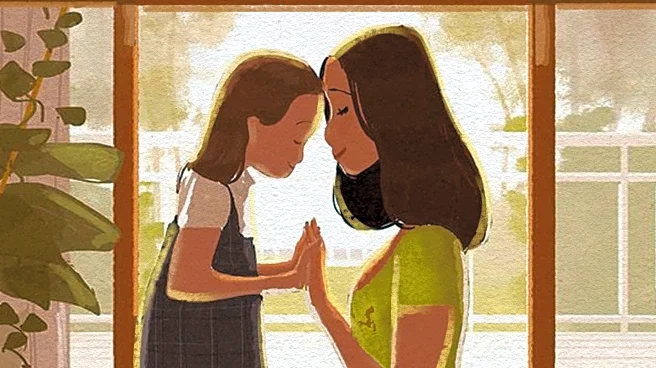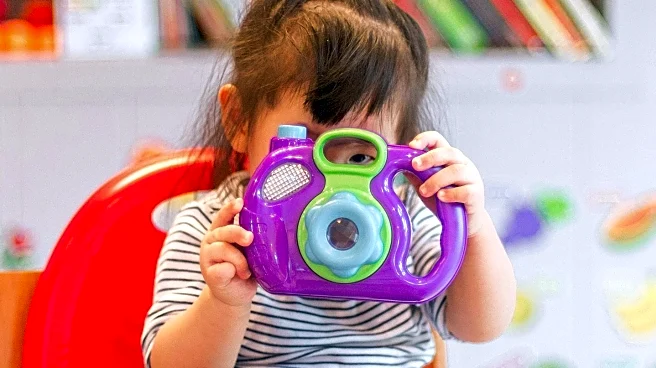What's Happening?
Ashleigh Vaillancourt Seegar, a 31-year-old woman from Virginia, recently experienced an emotional moment when she received a video of her late father, James Vaillancourt, who passed away 25 years ago. Seegar was only six years old at the time of her father's death in April 2000. The video, sent by someone who knew her father, captured him laughing and waving at the camera as he entered a barber shop. Seegar shared the video on TikTok, where it quickly went viral, garnering over 500,000 views and numerous comments from people who were moved by the footage. The video provided Seegar with a renewed connection to her father, whose voice she had forgotten over the years.
Why It's Important?
The viral video highlights the profound impact that visual memories can have on the grieving process. According to a 2021 study published in Qualitative Studies, photographs and videos serve as powerful tools for storytelling and memory reconstruction, allowing individuals to maintain bonds with deceased loved ones and express emotions that are difficult to verbalize. The widespread reaction to Seegar's video underscores the universal nature of grief and the comfort that can be found in rediscovering lost memories. This event also illustrates the role of social media platforms like TikTok in facilitating shared experiences and emotional support among users.
What's Next?
As the video continues to circulate online, it may inspire others to share their own stories and memories of lost loved ones, fostering a community of support and empathy. Seegar's experience could encourage more people to explore old photographs and videos as a means of coping with grief and maintaining connections with those who have passed away. Additionally, the viral nature of the video may lead to further discussions on the importance of preserving family memories and the role of technology in the grieving process.
Beyond the Headlines
The emotional response to Seegar's video highlights the ethical considerations surrounding the sharing of personal memories on public platforms. While such sharing can provide comfort and connection, it also raises questions about privacy and the potential for exploitation of sensitive content. As social media continues to evolve, users must navigate the balance between public sharing and personal privacy, particularly when dealing with emotionally charged material.










